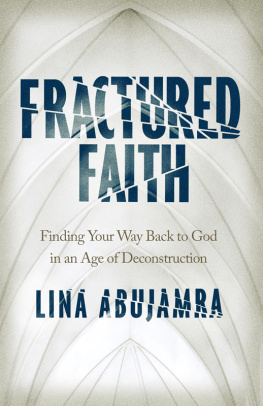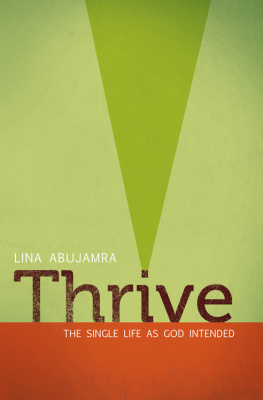I
The Casentino
Li ruscelletti, che de verdi colli
Del Casentin discendon giuso in Arno,
Facendi i lor canali e freddi e molli
Sempre mi stanno innanzi....
(Inf. 30, 65 ff.)
The Casentino is the name given to the upper valley of the Arno, where the river, rising in numerous streams on the slopes of the Falterona, flows southwards for about forty miles before it swings round in its course and runs north-westwards in the direction of Florence. The district, to use the words of a modern Italian writer, is formed by nature in the shape of a basketthose oval flower-baskets we see carried about the streets of Florencewith its lowest part green with meadows, fields and vineyards, and encircled and, so to say, closed in by lofty mountains. It is a district rich in memories of Dante and other associations. The halo of early Christian life, the gloom and splendour of feudal times, and the glow of the Renaissance, all linger here. And many beauties of nature, many feasts of the imagination here await the traveller who foregoes for a time the hasty temper of the tourist.
It was late one afternoon in April when we left the train at Bibbiena, and, shouldering our knapsacks, wended our way up from the station to the town. We were well in the land of the ancient Etruscans, that mysterious and visionary people whose fleet swept the Tyrrhenian Sea at a time when the greatness of Rome was not. Like other Etruscan cities, Bibbiena lies on the summit of a hill, and many examples of Etruscan art industry have been discovered in its neighbourhood.
It had been cold and cheerless in the noisy Italian train rattling up from Arezzo. A dull, stormy sky gave a desolate aspect to the irregular country and cast a shadow over the rugged mountains. But as we climbed the hill of Bibbiena our spirits rose. Side valleys opening up in different directions revealed winding roads and castle-crowned elevations; Poppi, with its soaring tower, stood up in bold outline; the higher mountains, many of them snow-capped, seemed to unite in one bold, forcible sweep. Which of these heights sheltered Camaldoli,
CHIESA MAGGIORE, LA VERNA
with its reminiscences of St Romuald?which the retreat of La Verna, with its thoughts of St Francis? Our anticipations were in no way damped when we found ourselves half an hour later sitting in the little dining-room of the Albergo Amorosi. Certainly the chief merit of the broth was its warmth,the pigeon was not drawn, though it was tender,and the cheese could never have suggested the difference between this commodity and chalk. But the delicious fried artichokes, and the assurance of mine host that to-morrow he could procure anything we pleased, went far to restoring our confidence. It was Easter Sunday, visitors could hardly have been expected at this late hour. Besides, the bedrooms and general appurtenances of the place were unexceptionable. So we made the best of our meal, examined the visitors book with deliberate curiosity, and then we sat down by the window and watched the fading light of day across a bit of old-fashioned garden, with its blossoming almond tree, the tender green of the budding fig, and the rusty black of a row of cypresses between us and the distant mountains.
Looking back to the time when the Casentino as such emerges from the dimness of the unrecorded past, we find obscurity hanging over this district longer than over adjacent parts of Tuscany. The circle of its enclosing mountains gave the Casentino a remoteness, which qualified its fate in the past as it adds a special colour to its life of to-day. The period of Etruscan independence and the period of Roman rule have left few obvious traces; it is of the times following the barbarian invasion that the district chiefly speaks. When men are thrown into new surroundings, new qualities come into play. There is something fascinating in analysing the influence which race has had upon race, and the results of bringing peoples of different degrees of culture into juxtaposition. All that survived of Roman culture and learning after the advent of the barbarians was to be found in the towns. The German invaders on the banks of the Arno, as on those of the Rhine, were impatient of the restraints of mutual dependencethey avoided life in cities. Once in possession of new lands, the leaders of the conquering host divided, each leader sought a centre of authority for himself, and the lesser military chiefs strove to equal the autonomy of the greater. Solitary and as reserved towards compeers as the eagle, these men made their homes by preference on rocky heights, which nature protected against surprise, and which the art of defence succeeded in rendering almost impregnable.
History chronicled at least four distinct barbarian descents into Northern Italy in the fifth and sixth centuries. Different races and different branches of the same race ousted one another from possession of the land. When the tumult of contrary tides subsided, the Langobards held the sway, which they retained for over two hundred years. The Langobards spirit is that of the hunterit lives to this day in the architectural decorations of North Italian churches, where the bristling boar and the leashed hound, the fierce wolf and the rampant lion, the flying deer and the hungry bird, with nondescript monsters of various kinds, do service in ornamenting faades, supporting columns and relieving capitals.
We know little concerning the settling of Langobard chiefs in the Casentino, but the district, with its fruitful upland tracts, its rocky elevations and wooded side valleys, had great attractions for the invaders, since it favoured the mode of life they held dear. When authentic records begin, many strongholds of the district were in the hands of men who were Langobards by descent, and who became progenitors of some of the most distinguished families of Tuscany. Among these the Guidi claim special attention. For the history of this family decided the history of the Casentino for over four hundred years. No family attained a power at all equalled by theirs, no family so deeply impressed the mind of Dante, and none is so frequently mentioned in the Divine Comedy.
It was against the further advance of the Langobards that the Pope in the eighth century called upon the loyal Franks to interfere in behalf of the temporal estates of the Church. Once again the fertile plains of Italy were overrun by Germans, but in this case by Germans who had grasped the idea of a centralised system of government. Before the unity of the Franks the scattered and divided nobles of Italy were as chaff before the wind. The greater number of her dukes, counts and barons recognised Frankish over-lordship, and in due course became feudatories to the Empire. This relation eventually secured to the Emperor his staunchest allies against the growing Italian communesit in no way debarred the Italian nobles from living as independent chiefs, warring against one another as personal hatred, jealousy and private revenge prompted. The distinguishing qualities of these menthey may well be called virtueswere audacity, enterprise and a boundless self-reliance. But they were qualities unseparated as yet from the revolting contempt for life and limb of a rough barbarian age, a contempt that found expression in wanton stabbing, poisoning and mutilation as a convenient mode of retaliation on enemies.












